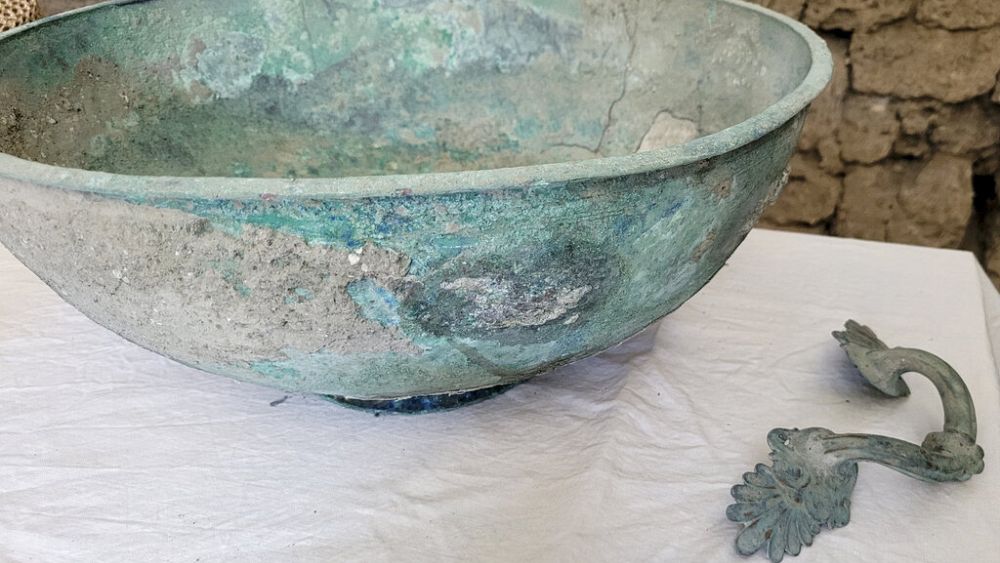What was life like for normal people living in Pompeii?
Up until recently, archaeological digs have mainly focused on the lavish villas of wealthy residents in the ancient Roman city, which was buried under a thick layer of volcanic ash when Mount Vesuvius erupted in 79 AD.
But the latest discoveries at the site, announced by Pompeii’s archaeological park on Saturday, give a peek into what life was like for the city’s middle class, those with disposable income to buy home décor who still worried about feeding their families.
“In the Roman empire, there was an ample chunk of the population that struggled with their social status and for whom ‘daily bread,’ was anything but a given,″ said Pompeii archaeological park director Gabriel Zuchtriegel. ”A vulnerable class during political crises and food shortages, but also ambitious about climbing the social ladder.”
Zuchtriegel said the excavation of four new rooms in a home, which was first unearthed in 2018, had revealed precious details about the domestic environment of the city’s ordinary citizens. Some of the more remarkable objects found include a wooden dishware closet filled with perfectly-preserved plates, a trunk thrown open as its owner tried to flee the falling debris, and three-legged accent tables topped with decorative bowls.
In a bedroom, archaeologists found the remains of a bed frame with a trace of fabric from the pillow. The kind of bed is identical to three, cot-like beds unearthed last year in a tiny room in another residence that archaeologists believe doubled as a storeroom and sleeping quarters for a family of enslaved inhabitants of Pompeii.
Exposing the storeroom revealed a wooden closet, its backboard still intact but the shelves caved in. Archaeologists believe the closet had at least four panel doors and held cookware and dishes for the nearby kitchen. The excavators also found a hinge from the enclosure.
“Inside we find glass objects, like bottles, but also ceramic, like vases, that we are gradually discovering,” Zuchtriegel said.
Other objects found in the house include a large fragment of what had been a translucent, rimmed plate in brilliant hues of cobalt blue and emerald, and a well-preserved incense burner, shaped like a cradle.
Pompeii’s archaeological site, near the modern Italian city of Naples, is one of the most popular tourist sites in the country, attracting four million visitors in 2019.




















Discussion about this post